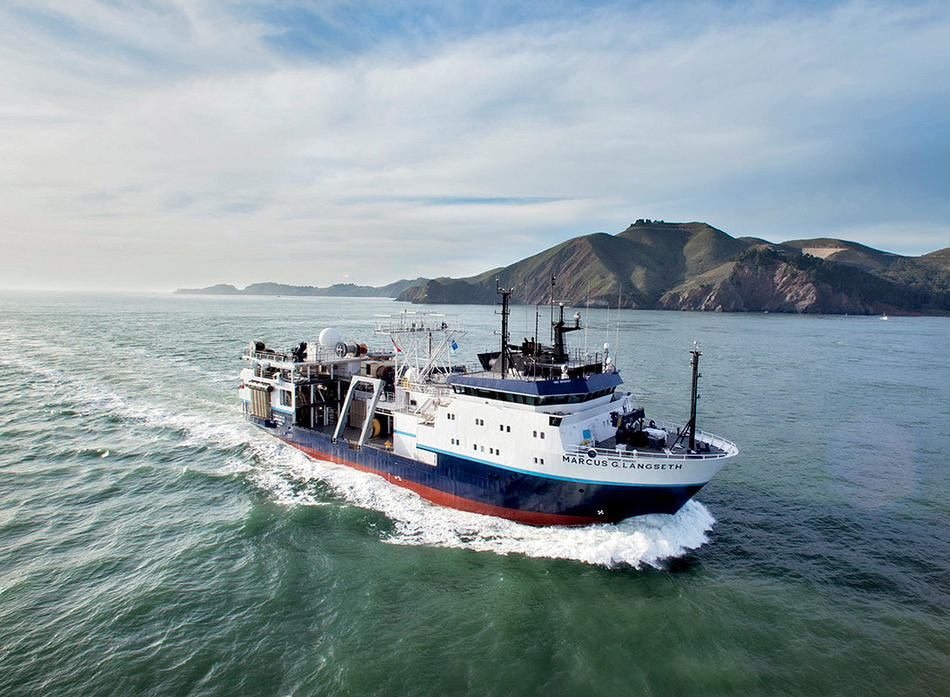While surveying the Atlantic sea floor, scientists aboard the research vessel Marcus G. Langseth (above) discovered a gigantic aquifer of fresh water trapped in sediments below the salty ocean.
The aquifer, stretching from Massachusetts to New Jersey and extending from the shore some fifty miles out to sea, is the largest such formation yet found in the world. It appears to hold 670 cubic miles of water — more than Lake Erie and Lake Ontario combined.
In their study, geophysicist Kerry Key of Columbia’s Lamont-Doherty Earth Observatory, fellow geophysicist Rob L. Evans of the Woods Hole Oceanographic Institution, and Columbia PhD candidate Chloe Gustafson argue that such aquifers probably lie off many coasts worldwide and could be tapped as sources of water in arid areas. “We knew there was fresh water down there, but we didn’t know the extent,” says Gustafson.
This article appears in the Fall 2019 print edition of Columbia Magazine with the title "Deep-water surprise."



